Category Archives: Data Science
Python Sklearn – How to Generate Random Datasets
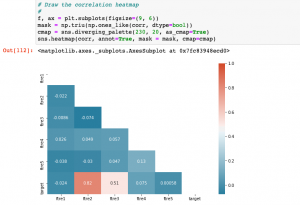
In this post, you will learn about some useful random datasets generators provided by Python Sklearn. There are many methods provided as part of Sklearn.datasets package. In this post, we will take the most common ones such as some of the following which could be used for creating data sets for doing proof-of-concepts solution for regression, classification and clustering machine learning algorithms. As data scientists, you must get familiar with these methods in order to quickly create the datasets for training models using different machine learning algorithms. Methods for generating datasets for Classification Methods for generating datasets for Regression Methods for Generating Datasets for Classification The following is the list of …
Neural Networks and Mathematical Models Examples
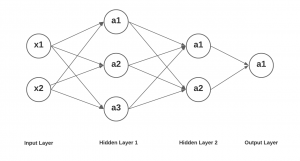
In this post, you will learn about concepts of neural networks with the help of mathematical models examples. In simple words, you will learn about how to represent the neural networks using mathematical equations. As a data scientist / machine learning researcher, it would be good to get a sense of how the neural networks can be converted into a bunch of mathematical equations for calculating different values. Having a good understanding of representing the activation function output of different computation units / nodes / neuron in different layers would help in understanding back propagation algorithm in a better and easier manner. This will be dealt in one of the …
Adaptive Linear Neuron (Adaline) Python Example

In this post, you will learn the concepts of Adaline (ADAptive LInear NEuron), a machine learning algorithm, along with Python example.As like Perceptron, it is important to understand the concepts of Adaline as it forms the foundation of learning neural networks. The concept of Perceptron and Adaline could found to be useful in understanding how gradient descent can be used to learn the weights which when combined with input signals is used to make predictions based on unit step function output. Here are the topics covered in this post in relation to Adaline algorithm and its Python implementation: What’s Adaline? Adaline Python implementation Model trained using Adaline implementation What’s Adaptive …
Python Implementations of Machine Learning Models

This post highlights some great pages where python implementations for different machine learning models can be found. If you are a data scientist who wants to get a fair idea of whats working underneath different machine learning algorithms, you may want to check out the Ml-from-scratch page. The top highlights of this repository are python implementations for the following: Supervised learning algorithms (linear regression, logistic regression, decision tree, random forest, XGBoost, Naive bayes, neural network etc) Unsupervised learning algorithms (K-means, GAN, Gaussian mixture models etc) Reinforcement learning algorithms (Deep Q Network) Dimensionality reduction techniques such as PCA Deep learning Examples that make use of above mentioned algorithms Here is an insight into …
Python – Extract Text from HTML using BeautifulSoup

In this post, you will learn about how to use Python BeautifulSoup and NLTK to extract words from HTML pages and perform text analysis such as frequency distribution. The example in this post is based on reading HTML pages directly from the website and performing text analysis. However, you could also download the web pages and then perform text analysis by loading pages from local storage. Python Code for Extracting Text from HTML Pages Here is the Python code for extracting text from HTML pages and perform text analysis. Pay attention to some of the following in the code given below: URLLib request is used to read the html page …
Top 10 Data Science Skills for Product Managers

In this post, you will learn about some of the top data science skills / concepts which may be required for product managers / business analyst to have, in order to create useful machine learning based solutions. Here are some of the topics / concepts which need to be understood well by product managers / business analysts in order to tackle day-to-day challenges while working with data science / machine learning teams. Knowing these concepts will help product managers / business analyst acquire enough skills in order to solve machine learning based problems. Understanding the difference between AI, machine learning, data science, deep learning Which problems are machine learning problems? …
RANSAC Regression Explained with Python Examples
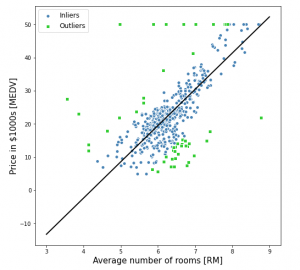
In this post, you will learn about the concepts of RANSAC regression algorithm along with Python Sklearn example for RANSAC regression implementation using RANSACRegressor. RANSAC regression algorithm is useful for handling the outliers dataset. Instead of taking care of outliers using statistical and other techniques, one can use RANSAC regression algorithm which takes care of the outlier data. In this post, the following topics are covered: Introduction to RANSAC regression RANSAC Regression Python code example Introduction to RANSAC Regression RANSAC (RANdom SAmple Consensus) algorithm takes linear regression algorithm to the next level by excluding the outliers in the training dataset. The presence of outliers in the training dataset does impact …
Beta Distribution Explained with Python Examples
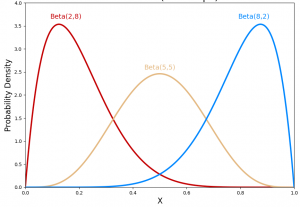
In this post, you will learn about Beta probability distribution with the help of Python examples. As a data scientist, it is very important to understand beta distribution as it is used very commonly as prior in Bayesian modeling. In this post, the following topics get covered: Beta distribution intuition and examples Introduction to beta distribution Beta distribution python examples Beta Distribution Intuition & Examples Beta distribution is widely used to model the prior beliefs or probability distribution in real world applications. Here is a great article on understanding beta distribution with an example of baseball game. You may want to pay attention to the fact that even if the baseball …
Bernoulli Distribution Explained with Python Examples
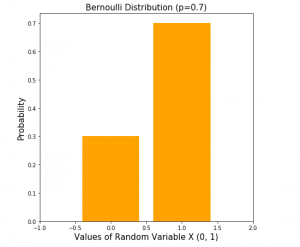
In this post, you will learn about the concepts of Bernoulli Distribution along with real-world examples and Python code samples. As a data scientist, it is very important to understand statistical concepts around various different probability distributions to understand the data distribution in a better manner. In this post, the following topics will get covered: Introduction to Bernoulli distribution Bernoulli distribution real-world examples Bernoulli distribution python code examples Introduction to Bernoulli Distribution Bernoulli distribution is a discrete probability distribution representing the discrete probabilities of a random variable which can take only one of the two possible values such as 1 or 0, yes or no, true or false etc. The probability of …
Deep Learning Explained Simply in Layman Terms
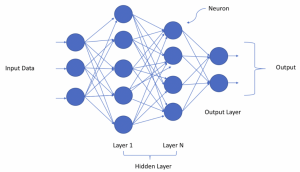
In this post, you will get to learn deep learning through simple explanation (layman terms) and examples. Deep learning is part or subset of machine learning and not something which is different than machine learning. Many of us when starting to learn machine learning try and look for the answers to the question “what is the difference between machine learning & deep learning?”. Well, both machine learning and deep learning is about learning from past experience (data) and make predictions on future data. Deep learning can be termed as an approach to machine learning where learning from past data happens based on artificial neural network (a mathematical model mimicking human brain). …
Bayes Theorem Explained with Examples
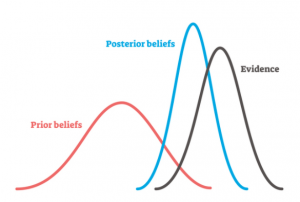
In this post, you will learn about Bayes’ Theorem with the help of examples. It is of utmost importance to get a good understanding of Bayes Theorem in order to create probabilistic models. Bayes’ theorem is alternatively called as Bayes’ rule or Bayes’ law. One of the many applications of Bayes’s theorem is Bayesian inference which is one of the approaches of statistical inference (other being Frequentist inference), and fundamental to Bayesian statistics. In this post, you will learn about the following: Introduction to Bayes’ Theorem Bayes’ theorem real-world examples Introduction to Bayes’ Theorem In simple words, Bayes Theorem is used to determine the probability of a hypothesis in the presence of more evidence or information. In other …
Joint & Conditional Probability Explained with Examples
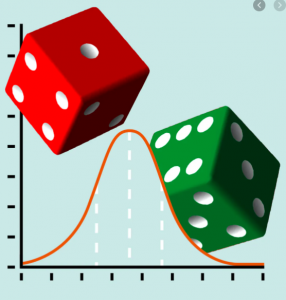
In this post, you will learn about joint and conditional probability differences and examples. When starting with Bayesian analytics, it is very important to have a good understanding around probability concepts. And, the probability concepts such as joint and conditional probability is fundamental to probability and key to Bayesian modeling in machine learning. As a data scientist, you must get a good understanding of probability related concepts. Joint & Conditional Probability Concepts In this section, you will learn about basic concepts in relation to Joint and conditional probability. Probability of an event can be quantified as a function of uncertainty of whether that event will occur or not. Let’s say an event A is …
K-means Clustering Elbow Method & SSE Plot – Python
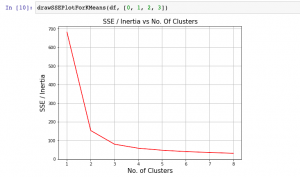
In this plot, you will quickly learn about how to find elbow point using SSE or Inertia plot with Python code and You may want to check out my blog on K-means clustering explained with Python example. The following topics get covered in this post: What is Elbow Method? How to create SSE / Inertia plot? How to find Elbow point using SSE Plot What is Elbow Method? Elbow method is one of the most popular method used to select the optimal number of clusters by fitting the model with a range of values for K in K-means algorithm. Elbow method requires drawing a line plot between SSE (Sum of Squared errors) …
Adaboost Algorithm Explained with Python Example
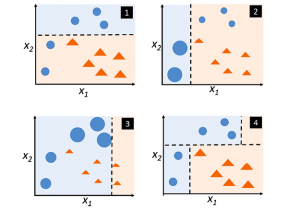
In this post, you will learn about boosting technique and adaboost algorithm with the help of Python example. You will also learn about the concept of boosting in general. Boosting classifiers are a class of ensemble-based machine learning algorithms which helps in variance reduction. It is very important for you as data scientist to learn both bagging and boosting techniques for solving classification problems. Check my post on bagging – Bagging Classifier explained with Python example for learning more about bagging technique. The following represents some of the topics covered in this post: What is Boosting and Adaboost Algorithm? Adaboost algorithm Python example What is Boosting and Adaboost Algorithm? As …
Hard vs Soft Voting Classifier Python Example
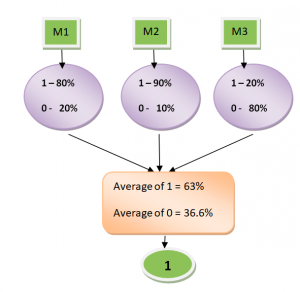
In this post, you will learn about one of the popular and powerful ensemble classifier called as Voting Classifier using Python Sklearn example. Voting classifier comes with multiple voting options such as hard and soft voting options. Hard vs Soft Voting classifier is illustrated with code examples. The following topic has been covered in this post: Voting classifier – Hard vs Soft voting options Voting classifier Python example Voting Classifier – Hard vs Soft Voting Options Voting Classifier is an estimator that combines models representing different classification algorithms associated with individual weights for confidence. The Voting classifier estimator built by combining different classification models turns out to be stronger meta-classifier that balances out the individual …
Keras Hello World Example
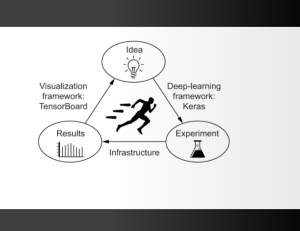
In this post, you will learn about how to set up Keras and get started with Keras, one of the most popular deep learning frameworks in current times which is built on top of TensorFlow 2.0 and can scale to large clusters of GPUs. You will also learn about getting started with hello world program with Keras code example. Here are some of the topics which will be covered in this post: Set up Keras with Anaconda Keras Hello World Program Set up Keras with Anaconda In this section, you will learn about how to set up Keras with Anaconda. Here are the steps: Go to Environments page in Anaconda App. …
I found it very helpful. However the differences are not too understandable for me